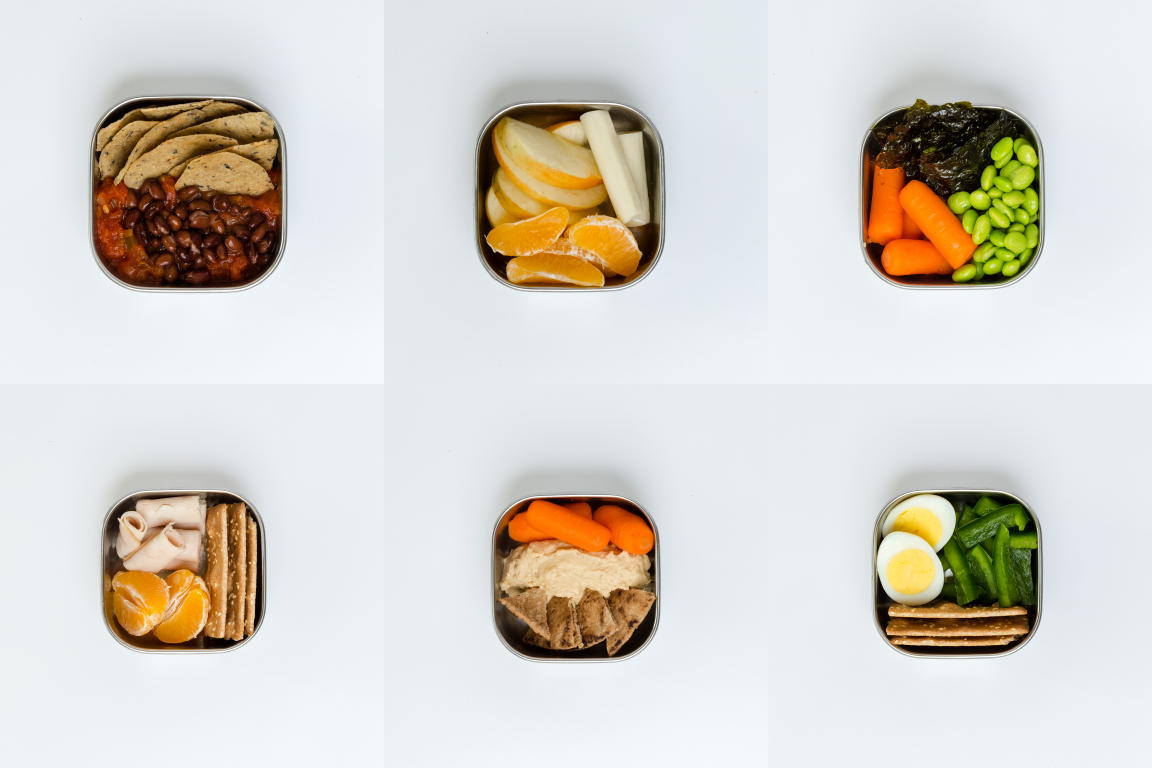Packing snacks is a great way to fuel your body between meals, and it’s often more affordable and convenient than purchasing snacks on campus. Eating balanced snacks helps boost your mood, increase your energy and improve your focus. Here’s a quick guide to help you create satisfying, easy-to-pack snacks:
Think of Snacks as Mini Meals
Try to include each macronutrient (protein, carbohydrate and fat) in a snack. If you’re grabbing a banana at the CoHo, add a fat and/or protein source like a hard-boiled egg, string cheese or nut butter. These balanced “mini-meals” will help boost your mood and sustain your energy. Here are some mini-meal examples.

Visit the UC Davis Teaching Kitchen Pinterest Page for more easy and affordable snacking ideas.
Go for the Grain
Whole grain snacks may help you feel fuller longer, because the fiber in whole grains makes your body digest them more slowly. Try whole grain crackers or tortilla chips with hummus, cottage cheese or beans. Did you know that popcorn is whole grain? In fact, one 3-cup serving of popcorn contains about 15 percent of your daily value of fiber. You can also make an affordable trail mix with popcorn, dried fruit and pumpkin seeds or nuts!
Bring Back Breakfast
Many foods that are eaten for breakfast can be enjoyed later in the day. Overnight oatmeal can be easily prepared the night before. You can make a large batch for the week and bring a smaller portion for a snack. Other ideas include: yogurt parfaits, scrambled egg muffins, chia seed pudding, or banana and peanut butter wrap.
Go Nuts
Unsalted nuts and seeds contain many beneficial nutrients and are more likely to leave you feeling full longer. Besides being packed with protein, most nuts contain these heart-healthy omega-3 fatty acids, fiber and Vitamin E!
Add Nutrients
Use snacks as a way to incorporate foods that you would like to eat more of in your diet. For example, if you’re trying to eat more fruits and veggies, you can get plain yogurt and add fresh fruit to sweeten it. Pair sliced veggies with hummus and pita chips. Mix tomatoes and chopped bell peppers into black beans. Add nut butter to celery or apple slices for a crunchy, satisfying mini-meal.
Plan Ahead
Perhaps the most important step in packing a snack is to think ahead. Pack a small bag of non-perishable snacks, like dried fruit, nuts and bars, in your backpack for when you’re on campus for an extended time. This will save you money and time! If you do need to find snacks on campus, use the Food Access Map to find food that fits your needs.
Take it with You
If you are packing snacks from your fridge, there’s no need to worry about food safety if you eat it within 4 hours of it being out of the fridge. Some additional tips for longer days include:
- Consider purchasing smaller ice packs or making a DIY ice pack at home to pack with your food.
- Use frozen water bottles, because you can use them to keep your food cold and drink the water once it melts.
- If you pack your snack and lunch the night before, put everything (including your lunch box) in the fridge. Your meal will stay cold longer because everything will be refrigerator temperature when you leave for the day.
For more information about this campaign or if you’re interested in using the campaign materials, please contact Shantille Connolly at shathompson@ucdavis.edu.
